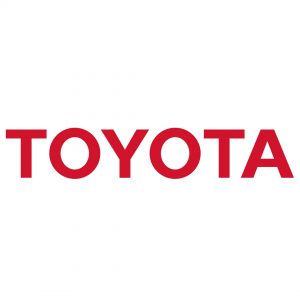Toyota Cuts Manufacturing Emissions with Development of World’s First General-Purpose Industrial Hydrogen Burner
Toyota Motor Corporation (Toyota) has developed the world’s first1 general-purpose hydrogen burner for industrial use, working in collaboration with industrial furnace specialist Chugai Ro Co Ltd. The new structure produces lower nitrous oxides (NOx) emissions than natural gas burners, with zero carbon dioxide emissions from combustion.
The new burner has gone into service today on the forging line at Toyota’s Honsha plant in Japan. The company hopes eventually to replace 1,000 large-scale natural gas burners in its Japanese facilities with the new, cleaner technology.
In conventional hydrogen burners, hydrogen reacts rapidly with oxygen, producing a high flame temperature and environmentally hazardous NOx emissions, making it challenging to put hydrogen burners to practical use. The new burners have two structures which allow the hydrogen to combust more slowly. They also give excellent environmental performance, producing no CO2 emissions and greatly reduced levels of NOx 2.
Preventing the complete mixing of hydrogen and oxygen
If hydrogen and oxygen are in a fully mixed state when ignited, the mixture burns violently with a high flame temperature. In the new burner, the two gases flow side by side and are ignited without being fully mixed. This leads to slower combustion and a lower flame temperature.
Lowering oxygen concentration inside the furnace
If the fuel mixture contains a high concentration of oxygen at the time of ignition, combustion is violent, with a high flame temperature. To prevent this, small holes are opened in the pipes supplying hydrogen to the burner. This allows small volumes of hydrogen and oxygen to pre-combust. Consequently, oxygen concentrations are reduced to an optimum 19 per cent for main combustion, resulting in a lower flame temperature.
To achieve the targets in its Plant Zero CO2 Emissions Challenge, part of the Toyota Environmental Challenge 2050, Toyota is implementing innovative technologies and everyday kaizen (continuous improvement) activities. It also aims to use energy from renewable sources in its plants, including hydrogen. Toyota plans to gradually install the new technology at its Japanese plants, and other companies in the Toyota Group are also considering installation.
Toyota is seeking to realise a future hydrogen-powered society and reduce its industrial carbon footprint by promoting the use of industrial hydrogen and contributing to increased demand for hydrogen.
1 As of 8 November 2018
2 Lower than natural gas burners of equivalent scale
ENDS


